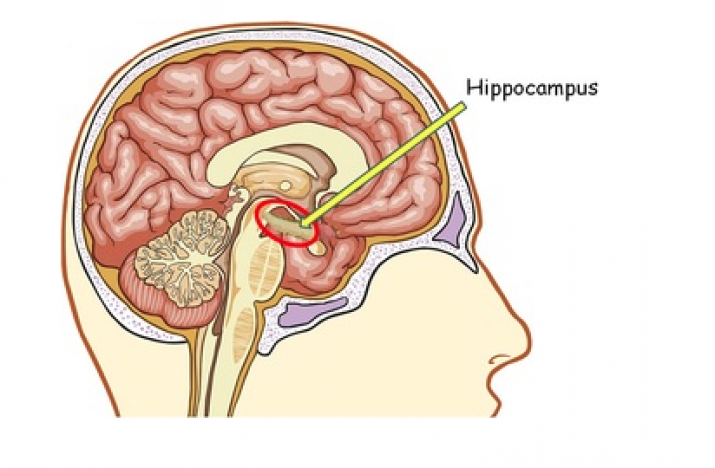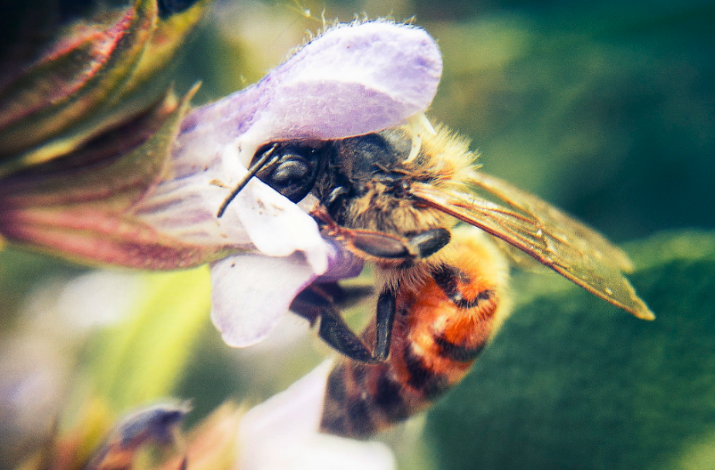FEATURES|COLUMNS|Art of Living
How to Enjoy Life Twice as Much, Part 2: Michel de Montaigne and Rick Hanson on Life’s Natural Pleasures
Near the end of his life, near the end of the last essay in his nearly 1,000-page book, the nearly universally admired* French renaissance philosopher Michel de Montaigne (1533–92) boasted: “I enjoy life twice as much as others.” (Montaigne 1957, 1,040) As we saw in Part 1 of this essay, he attributed his love of life to his very “particular” and “careful” approach to enjoying what he called the “natural pleasures of life.”** As we also saw, a spate of recent research unequivocally supports Montaigne’s claim that to increase our enjoyment of life we must begin by making a point of either attending to or actively creating enjoyable experiences, giving our full attention to these moments, and then noticing and relinquishing any inhibitions that may prevent us from doing so.
However, neither Montaigne nor contemporary psychologists such as Rick Hanson maintain that these processes will, on their own, increase our delight in living. Instead, they emphasize that we must make a few additional mental movements. In particular, they invite us to prolong and amplify our experiences of enjoyment by interacting with them in a sensory way and then utterly immerse ourselves in such pleasures before finally acknowledging their transience and letting them go. In the interest of increasing our own enjoyment of life and helping others to do likewise, let’s explore each of these points in turn.
 Michel de Montaigne. Image courtesy of the author
Michel de Montaigne. Image courtesy of the author Rick Hanson. Image courtesy of the author
Rick Hanson. Image courtesy of the authorProlong your enjoyable experiences
While Montaigne certainly gives his full attention to his moments of enjoyment, he also goes further and gives these moments his lasting attention. In fact, he considers this the single greatest difference between how he responds to pleasure and how most of his peers do. For instance, he writes, “Others feel the sweetness of some satisfaction and of prosperity. I feel it as well as they, but it is not in passing and slipping by.” (Montaigne 1957, 1,040) Instead of letting the sweetness of happiness flit away, he reports that he deliberately “extends” such experiences, “stretches” them out, and “lingers” over them. (Montaigne 1957, 1,040) For instance, comparing a pleasant internal state to a sunny day, he writes, “When the weather is good, I don’t want to pass it; I savor it and hold on to it.” (Montaigne 1957, 1,040)
Fred Bryant, the pioneering researcher on savoring, defines savoring not just as “the capacity to attend to . . . the positive experiences of life,” but more specifically as the capacity to “attend to, appreciate, and enhance” such experiences (Bryant 2006, xi). This is precisely what Montaigne does. After he shines the flashlight of awareness on his enjoyable experiences he proceeds to bask in that light. It is at this point, when he shifts from simply noticing his pleasant experiences to maintaining and prolonging them, that he pivots from mindfulness into savoring. In fact, more than 400 years before savoring was ever exposed to scientific research, Montaigne concluded that it was his tendency to “extend” or “stretch” his moments of enjoyment that, more than anything else, increased his delight in living: “I enjoy it twice as much as others, for the measure of enjoyment depends on the greater or lesser degree of attention that we give it.” (Montaigne 1957, 1,040) It’s so simple: by paying twice as much attention to his enjoyable experiences, he stretches these moments out twice as long and as a result enjoys his life twice as much.
 From pinterest.com
From pinterest.comResearch on prolonging pleasure
From the perspective of contemporary neuroscience, Montaigne couldn’t be more spot-on. As we have seen, the basic principle that underlies “experience-dependent neuroplasticity”—the way the brain takes the shape of what the mind rests upon—is summed up in Carla Shatz’s paraphrase of Donald Hebb’s research: “Neurons that fire together, wire together.” As Daniel Siegel explains, “Where energy flows and neurons are active, links among simultaneously firing neurons are created or strengthened, making their firing together in the future more likely.” (Siegel 2004) This means that when we deliberately prolong our enjoyment of that first sip of coffee in the morning, or relish the mottled splotches of sunlight in a cedar grove, or revel in a shiver of healthy aggression, the links between the associated neurons fire together for longer and therefore wire together stronger. It is for this reason that Hanson identifies “duration” as the first of the five major factors that facilitate the conversion of fleeting mental states into lasting neural traits. (Hanson 2014, 264) It is also why he, like Montaigne, spends so much time encouraging his reader to “let yourself have your good experience. Be devoted to it, renouncing all else for as long as you like,” (Hanson 2014, 266) and often offers the following nudge: “Give your minds over to it [the pleasant experience]; in a good sense, let it have you. Make room for it.” (Hanson 2014, 266) For the simple reasons we’ve reviewed, the more seconds that tick by while we are immersed in a beneficial experience, the more neural structure we grow. The longer neurons fire together, the stronger they wire together. Which is why Hanson recommends that we stay with our pleasurable experiences for at least five, 10, or 20 seconds a pop, several times a day, but also emphasizes that “more is better.” (Hanson 2014, 229)
 From pinterest.com
From pinterest.comInteract with your enjoyable experiences in a sensory way
One of the ways that Montaigne “extends” or “stretches” out his moments of tranquility, excitement or joy is by interacting with these experiences in a very sensory and sensual way. He especially emphasizes the senses of taste and touch. Comparing an enjoyable experience to an irresistible dish of food, for example, he says, “I taste it and linger over it.” (Montaigne 1957, 1,041) While he makes the gustatory quality of his approach explicit here, elsewhere he allows it to remain implicit, as when he says of a pleasure, “We must . . . savor it.” The word savor comes from the Latin word sapere meaning “to taste,” “to have good taste,” or “to be wise,” and Montaigne clearly understood that it is wise not just to metaphorically but almost literally taste our pleasures. Like a blindfolded person trying to identify which particular flavor of gourmet jelly bean they are sampling, when Montaigne experiences a feeling like gratitude or peace of mind, it’s almost like he asks himself, “What does gratitude taste like? Is this peace of mind sweet or tangy or spicy? What is the particular flavor of this excitement? Is it fizzy, watery, bitter-sweet, or what?”
Elsewhere, Montaigne also says he “ruminates” his pleasures, another gustatory metaphor that likens the enjoyment of pleasurable experiences to the way ruminant animals, such as cows, sheep, and goats, regurgitate food they’ve already consumed and then chew it a second time. (Montaigne 1957, 1,041) Just so, to “live deep and suck out all the marrow of life” as Thoreau famously put it, Montaigne maintains that we must not only taste an enjoyable experience, but masticate it a second or a third time. And he makes it clear that he applies this gustatory approach not just to current but to bygone experiences when he approvingly quotes the Roman poet Martial: “Our lives are two / If we can relish our past life anew.” (Montaigne 1957, 1,038) In fact, even when Montaigne says that he “studies” his pleasures, he doesn’t mean this in some kind of detached, intellectual way but in the same way he describes his own idiosyncratic study habits: “Intellectually sensual, sensually intellectual.” (Montaigne 1957, 1,035)
A second pattern of sensory images reveals that Montaigne doesn’t just taste his moments of delight; he touches them too. After all, he says, “To enjoy life requires some husbandry.” (Montaigne 1957, 1,037) Husbandry is of course the activity of caring for, cultivating, and breeding crops and animals, a metaphor Montaigne appeals to repeatedly when he writes of enjoying life, as for example when he says we must engage in a “cultivation of the body.” (Montaigne 1957, 1,036) Just as a farmer tends to her crops, watering her lettuce and feeding her chickens, Montaigne plants and waters, feeds, and grooms his beneficial experiences. And he does this in a very physical, hands-on way, not only “weighing” his pleasant moments as one might weigh a bunch of radishes or a sack of wheat, but also “measuring” them as one might measure the height of a horse or the inches between a row of lettuce seeds, and then “sounding” his pleasures as one might measure the depth of a river or pond. (Montainge 1957, 1,040) In other words, he physicalizes his pleasures, handling them the way a gardener might hold up a magnificent cabbage he has grown or a rancher might stroke the mane of a healthy colt she has raised. He seems to ask of his beneficial experiences the same sorts of questions a farmer might ask herself of a pumpkin or a sheep: “What is its size? How much does it weigh? What does it feel like to the touch? What shape is it? Does it move around or stay still? How deep does it run?” All of these sensory metaphors make it abundantly clear that he doesn’t passively observe his moments of enjoyment. No, instead of letting them “slip away in passing” or “skimming over” them, he prolongs them by interacting with them in an earthy, rustic, rough-and-tumble way so that he can, as the title of his essay emphasizes, really experience them.
 From flickr.com
From flickr.comResearch on the benefits of physically sensing beneficial experiences
This element of Montaigne’s approach to enjoying life is also supported by an abundance of recent research. According to Hanson, in addition to “duration” two other factors responsible for converting fleeting mental events into lasting neural traits are “multimodality” and “novelty.” (Hanson 2014, 264) Multimodality essentially means being aware of all of the aspects associated with an initial moment of relaxation or delight. Daniel Siegel uses the acronym SIFT to help us orient ourselves toward the most important dimensions of our inner experiences, encouraging us to sift through the sensations, images, feelings, and thoughts associated with our beneficial experiences as though we are sifting flour. (Siegel 2008, 43) For instance, when we’re sitting at the computer and the memory of something a friend said makes us burst out laughing, we might tune into a sensation of lightness or ease, notice the image of an expanding bubble, attune to a feeling of delight, and catch the thought of a quip that might keep the joke going. But like Montaigne, Hanson especially emphasizes the importance of physically sensing our enjoyable experiences. For instance, in Hardwiring Happiness, Hanson encourages us to “in particular, try to sense good experiences in your whole body. Let your attention move down into your body.” (Hanson 2014, 115) Likewise, in Resilient he writes, “You can increase the absorption of an experience [by] sensing it sinking into you.” (Hanson 2018, 59) He also repeatedly invites us to notice “how good something feels on your skin or how touched you are when someone is kind to you.” (Hanson 2018, 59)
Sensing our enjoyable experiences in this way also allows us to remain attuned to the novelty of our pleasures, which is another one of the five factors that converts new learning experiences into lasting neural structures. (Hanson 2014, 264) The brain, Hanson reminds us, is “a novelty detector” that is designed to learn from what’s new or unexpected, which is why attending to what’s interesting or surprising about an experience stimulates neuronal growth. Each time our attention shifts to a fresh aspect of an experience, especially if it’s a sensory element—as it is when Montaigne moves from tasting and touching a joy to weighing and measuring it—it’s a new stimulus to the brain. According to Hanson, this not only “lifts dopamine levels and thus promotes the registration of the experience in your brain,” but it also increases the production of neurons in the hippocampus, the primary site in the brain where new neurons are born. (Hanson 2014, 264)
 Image courtesy of the author
Image courtesy of the authorAmplify your positive experiences by appreciating them
In addition to prolonging and sensing the various different aspects of a cozy or thrilling moment, Montaigne also explicitly emphasizes the importance of “appreciating and amplifying the happiness of it.” (Montaigne 1957, 1,040) How does he go about this? By deliberately cultivating a very vivid and fine-grained sense of gratitude for the many different aspects of such moments. The sheer volume of prose Montaigne lavishes on this facet of his process is a clear indication of the importance he places on it. Taking a personal experience of peace of mind as an example, he relishes the fact that in this moment he was not only “at peace with [his] conscience” and “free from inner passions,” but that his body was enjoying “regularly and adequately” its “gentle and pleasing function.” (Montaigne 1957, 1,040) In other words, he specifically expresses appreciation for the precise emotional qualities of his serenity, as well as the smooth physical functioning of his body. He also goes on to gratefully acknowledge “how much it is worth to [him] to be lodged at such a point that wherever [he] casts [his] glance the sky is calm about [him]: no desire, no fear or doubt that troubles the air for [him], no difficulty past, present, or future over which [his] imagination may not pass without hurt.” (Montaigne 1957, 1,041) He appreciates not just what he is experiencing (calm inner weather), but also what he is not experiencing: turbulent emotions or afflictive mind states like fear, desire, doubt, and hurt. It is by identifying in detail and at length all the different facets of his experience that he is grateful for, and then clarifying why he is grateful for them, that he is not only able to extend but amplify his joy.
 From pxhere.com
From pxhere.comAnother way he gives “greater splendor” to experiences such as relaxation and freedom from anxiety is by engaging in downward comparisons. He specifically contrasts his own good fortune favorably with three different types of unfortunate souls: those who are victims of undeserved misfortune; those who are “carried away” and “tossed about” by their own errors; and “slaves of hope” who accept their good fortune “listlessly and indifferently” because they are so preoccupied with the future that they take for granted the many pleasures that they already possess in the present. (Montaigne 1957, 1,040) There is, as far as I can tell, no sense of superiority or schadenfreude in Montaigne’s comparisons here; they are simply honest and appreciative observations that heighten and thicken his gratitude for his own pockets of peace of mind. While he initially describes these unfortunate souls in general terms, when he gets down to actually visualizing their plights he makes a point of doing so in a very comprehensive, precise, and varied way, picturing them to himself “in a thousand forms” or “from hundreds of aspects.” (Montaigne 1957, 1,041)
Research on amplifying and appreciating pleasures
The neuroscience backs up Montaigne on this point too. Another one of the five factors that facilitate the long-term installation of positive experiences is “intensity,” which is one of the main processes in the second step of Hanson’s “taking in the good” or HEAL protocol: “enriching.” As he writes, “Encouraging positive experiences to get more intense and feel as good as possible is a great way to get lasting benefit from them.” (Hanson 2018, 47) Why? It’s the same simple story. As Hanson explains, “As the intensity of an experience increases, so do levels of the neurotransmitter norepinephrine, which promotes the formation of new synapses; the more that an experience fosters new synapses, the more that it gets woven into your brain.” (Hanson 2014, 240) He also points out that as an experience increases in intensity, dopamine levels rise, which again promotes the growth of new synapses. So how do we go about this? Again, Hanson implicitly agrees with Montaigne: by encouraging your beneficial experiences to “become richer, fuller, and bigger in your body and mind” or by “letting it become as intense as possible.” (Hanson 2014, 235) As we have seen, this is precisely what Montaigne does when he gets the fire of his pleasures really crackling by actively tending to his peace of mind and repeatedly stoking it with appreciation and gratitude.
 Image courtesy of the author
Image courtesy of the authorJust as Hanson recommends, Montaigne also draws his attention to “things that are rewarding” about his enjoyable experiences, which is the fifth factor that heightens learning: personal relevance. (Hanson 2014, 235) As Hanson explains, our brains have a built-in tendency to file in long-term storage experiences that are meaningful or relevant to us, a natural tendency of mind we can harness and train to build up the neural traces of our positive experiences. How? By being aware of the specific ways in which an enriching experience might be helpful to us. For example, we might consider how a few moments of relaxation could ease stress and tension before a bout of hard work, or if we’re feeling driven or disconnected we might consider how a moment of gratitude might restore a sense of wonder and connection, or how the rich stillness of present-moment awareness might act as a balm for feelings such as boredom or apathy. Like honeybees, we can gather the specific kinds of nectar we need—lavender, blackberry, belonging, confidence—and then store this nectar in the hollow little cells inside us that need it most. And like bees, we can also do this in the service of something greater than our own individual selves. In his recent and very well-researched book The All-In Marriage, Eli Finkel summarizes some fascinating strands of research that show various evidence-based ways couples can improve their relationships by “savoring strengths.” (Finkel, 2017, 195–202) Even those who are healing from trauma can be aided in various ways by the soothing and stabilizing effects of what polyvagal trauma-therapist Deb Dana refers to as “the art of savoring.” (Dana 2018, 164–74) According to Hanson, tuning in to what is helpful or hopeful about an experience in these ways is effective because it again increases the activity of two neurotransmitter systems—dopamine and norepinephrine—that flag the experience as a keeper and mark it for long-term storage. (Hanson 2014, 239)
 From flickr.com
From flickr.comFinally, just as Montaigne suggests, according to Robert Emmons, the world’s premiere researcher on gratitude, one way of increasing our gratitude is by “do[ing] a downward-comparison.” (Emmons 2016, 57) “When we encounter misfortune along our journey,” he writes, “we can suddenly realize by comparison how blessed we are. Seeing others struggle with poverty or illness or discrimination helps us not to take our own abundance or health or privilege for granted.” (Emmons 2016, 57) According to Emmons, this helpful form of comparison-thinking basically impresses upon us the awareness that “it could have been different,” which in turn can “give us a deeper appreciation of what we might otherwise fail to notice, or we might feel entitled to or take for granted.” (Emmons 2016, 58)
Give yourself over to your pleasures and “join” in them
Although, as we have seen, Montaigne deliberately prolongs his experiences of enjoyment by physically sensing them, he is also careful to avoid merely sensing them. When he finds himself in the midst of exquisite pleasures, he does actively taste and touch and weigh them, but he is also careful to include this important qualification: “I don't let my senses pilfer it.” (Montaigne 1957, 1,039) Because the pleasures of the senses are so fleeting, if he allowed an enjoyable experience to remain exclusively sensual—in other words, if he let his senses “pilfer” or steal it, like a burglar or a mugger—then the pleasure would be here one second, gone the next. To be sure this doesn’t happen, he says, “I make my soul join in it.” (Montaigne 1957, 1041) While Montaigne uses the word “soul” in a very specific way (which we won’t go into here) this much seems clear: he makes a conscious and deliberate effort to utterly collapse the distance between that which does the savoring and the experience that is being savored. He immerses himself in his experience of pleasure; he soaks in it, marinates in it, bathes in it, basks in it, blends with it, merges into it, luxuriates in it, “joins in it.”
 From boredpanda.com
From boredpanda.comIt’s worth noting that this requires some effort on his part; he has to “make” his soul join in the experience. He even says he sometimes has to “bend” or “force” his reason to welcome his moments of enjoyment. (Montaigne 1957, 1,040) But he exerts himself. Like he’s coaxing a timid friend to “join” him at a dinner party, he “brings” himself into his pleasures. (Montaigne 1957, 1,040) Then, personifying his soul as a woman who at first cannot recognize herself in the happy image she sees in a mirror, he gently encourages her to continue gazing until she finally “finds” herself in the reflection and “observes herself mirrored in that happy state.” (Montaigne 1957, 1,042) That is to say, he gazes at length at his pleasures the way we might gaze patiently into the mirror until, beneath the lines and creases and the little flickers of fear or sadness, we catch our eyes begin to gleam with a smile. Then he deliberately rests in that gleam until the person looking blends into the person looking back, and there emerges a felt recognition that the happiness one sees in the mirror at such times is indeed our birthright. That which is most distinct and essential about us, the “soul,” finds its own nature reflected back to it in this mirror-image of happiness: she “finds” herself in the reflection and “observes herself mirrored in that happy state.” (Montaigne 1957, 1,042)
Research on “joining” our beneficial experiences
These basic points are also supported by recent neuroscience. One of the keys to “installing” a positive experience in implicit memory, according to Hanson, is making an intentional decision to “absorb” it, the third step in his “taking in the good” process. (Hanson 2018, 59) While he addresses many different ways of going about this, they all boil down to a psychological movement very similar to the process of “joining” that Montaigne describes. For instance, Hanson often encourages his reader to “give your mind over to it [the positive experience]; in a good sense, let it have you. Make room for it, preserve a sanctuary for it in your mind.” (Hanson 2014, 266) He also continually invites his reader to “let it really land in your mind” by “giv[ing] over to it, allowing it to become a part of you.” (Hanson 2018, 61) To ensure it really settles down into the brain and becomes an enduring internal resource, he also recommends we use our imaginations to visualize the experience itself sifting down into us “like a golden dust,” or feel it easing into us “like a soothing balm.” (Hanson 2014, 120) The metaphors are slightly different from Montaigne’s but the basic principle is the same: if you want to fully benefit from a helpful experience, utterly immerse yourself in it, “join” in it.
Acknowledge the transience of natural pleasures and relinquish them
Finally, Montaigne makes it clear that although he goes out of his way to join in his positive experiences, he does not, as he says, “bind” himself to them. (Montaigne 1957, 1,041) To do so would be immoderate and in Montaigne’s experience immoderation is not only an anathema to enjoyment, but unnatural. Why unnatural? Because when he examines the pleasures of life up close, he finds in them “nothing but wind.” (Montaigne 1957, 1,035) Like the wind, that is, Montaigne sees that natural pleasures are “empty,” fleeting, insubstantial, ungraspable, (Montaigne 1957, 1,035) Nevertheless, he expresses his admiration for the fact that the wind “more wisely than we” loves to “bluster and toss about” and is “content with its own functions” despite its obvious impermanence. (Montaigne 1957, 1,035) Just as the wind enjoys its own ephemeral functions, so he thinks we should take pleasure “without wishing for stability and solidity, qualities that do not belong to it.” (Montaigne 1957, 1,035) In fact, to caution us against doing a pendulum swing away from natural pleasures altogether, he also explicitly emphasizes that “there is no need for us to exaggerate their emptiness: that makes itself sufficiently known and sufficiently manifest.” (Montaigne 1957, 1,035)
 From pinterest.com
From pinterest.comYet because his own lived experience has taught him that positive experiences are ultimately as “empty” as the wind, Montaigne is well aware of the folly of overindulging in them. In fact, for him, the attempt to overextend enjoyable experiences is as foolish as the attempt to turn away from them altogether. As he writes, “I consider it equal injustice to set our heart against natural pleasures and to set our heart too much on them.” (Montaigne 1957, 1,039) His main reason for this is supremely practical: “intemperance is the plague of sensual pleasure.” (Montaigne 1957, 1,039) Just as the literal plague killed Montaigne’s best friend La Boetie and so many of his peers, the attempt to cling or grasp to a pleasant mind-state kills the very thing to which we are trying to hold on, like a vine that strangles the tree it is growing on. Why? Because, for one thing, “even sensual pleasure is painful in its depth.” (Montaigne 1957, 1,039) And, for another, because the attempt to artificially prolong a pleasure causes it to “merge into pain.” (Montaigne 1957, 1,039) The first few times your sweetheart runs their fingers through your hair it might feel great, but after the 100th time it may become annoying, even downright painful. This is why no one, in Montaigne’s view, is more unhappy than those who pursue happiness immoderately: because the intemperate pursuit of happiness ironically amplifies our misery. Which, of course, does not mean we should ignore or dismiss enjoyable experiences altogether. That too would be immoderate. It just means we should exercise moderation in our endeavors to enjoy the pleasurable moments of life and let them go when their time is up. Montaigne, I think, would nod with a smile of recognition at the wisdom expressed in William Blake’s poem “Eternity”:
He who binds to himself a joy
Does the winged life destroy;
But he who kisses the joy as it flies
Lives in eternity’s sunrise.
Research on non-attachment to positive experiences
Like Montaigne, Hanson spotlights the fact that his protocol for “taking in the good” is “not about holding on to experiences,” mainly because he, like Montaigne, observes that “the stream of consciousness is constantly changing, so trying to cling to anything is both doomed and painful.” (Hanson 2018, 47) Here again, the research shores up both Montaigne’s and Hanson’s observations and unequivocally confirms the downside to clinging to positive experiences. As it turns out, those who have a higher tendency to cling to positive states experience higher levels of depression, anxiety, and suicide rumination than their non-attached counterparts. (Sahdra et al. 2010; Lamis and Dvorak 2013) They also exhibit lower life satisfaction in general and are, in particular, less effective at managing time, handling social situations, achieving important goals, changing their point of view in the face of contradictory evidence, facing challenges with a sense of calm and mental balance, and trusting themselves to fully engage with a task at hand. (Sahdra et al. 2016) Research has also found that people who are attached to positive states are less generous toward others, (Sahdra et al. 2010) and less open-minded. (Sahdra and Shaver 2013) Summing up the research on the subject, Joseph Ciarrochi observes: “Taken together, these findings suggest that experiential attachment to positive states can interfere with effective living and prosociality and lead to poor mental health.” (Carriochi 2016) Steven C. Hayes puts the point more dramatically: “Like a butterfly pinned to a table, happiness dies unless it is held lightly.” (Harris 2007, ix)
And yet, Hanson inadvertently echoes Montaigne again when he makes the subtle yet very important point that “you can encourage whatever is beneficial to arise and stick around and sink in, even as you are letting go of it.” (Hanson 2018, 59) Clearly, like Montaigne, his approach walks a middle way between renouncing beneficial experiences altogether and clinging to them. In fact, comparing happiness to “a beautiful wild animal watching from the edge of the forest,” he says, “if you try to grab it, it will run away.” (Hanson 2018, 47) If, on the other hand, we quietly and consistently go about our business of metabolizing our beneficial experiences in the ways we’ve been exploring, then he assures us that the beautiful, wild animal will not just approach but befriend us: “if you stick by your campfire and add some sticks to it, happiness will come to you and stay.” (Hanson 2018, 47) The Buddha purportedly said something very similar many thousands of years ago: “Think not lightly of good, saying. ‘It will not come to me.’ Drop by drop is the water pot filled. Likewise, the wise one, gathering it little by little, fills oneself with good.” (Dhammapada, 9.122)
 Image courtesy of the author
Image courtesy of the authorExercise: enjoying the natural pleasures of life
1) Make a point of taking time out to create and/or retrieve enjoyable experiences;
2) Give your full attention to these moments;
3) Notice and relinquish any inhibitions that show up;
4) Prolong your beneficial experiences;
5) Interact with them in a sensory way;
6) Appreciate and amplify them;
7) Join in them;
8) Acknowledge the transience of these beneficial moments and release them;
9) Rinse and repeat, 3–4 times a day for at least 29 seconds a pop. Or longer. Or much much longer.
* In his book The Western Canon, the influential literary critic Harold Bloom considers Montaigne one of the 26 most influential writers of all time. In addition to inventing the essay, Montaigne influenced figures as diverse as Descartes, Diderot, Emerson, Hume, Nietzsche, Rousseau, Shakespeare, Judith Shklar, and Virginia Woolf. In short, most people who read Montaigne seem to echo what Nietzsche said of Montaigne: “The fact that such a man has written truly adds to the joy of living on this earth.”
** No hedonist, Montaigne used the word “pleasure” very broadly, to include not only sensual pleasures (such as eating, drinking, and sex) but also, and perhaps more importantly, emotional pleasures (such as serenity, happiness, and well-being), intellectual pleasures (such as reading, conversing, and solving math problems), as well as aesthetic pleasures (such as delight, awe, and appreciation of beauty).
References
Ciarrochi, Joseph et. al. 2016. “Contextual Positive Psychology: Policy Recommendations for Implementing Positive Psychology into Schools.” Frontiers in Psychology. 2016; 7: 1561. Published online 10 October 2016. doi: 10.3389/fpsyg.2016.01561
Cohn, Michael A. et al. 2009. “Happiness Unpacked: Positive Emotions Increase Life Satisfaction by Building Resilience,” Emotion 9: 361–68.
Dana, Deb. 2018. The Polyvagal Theory in Therapy: Engaging the Rhythm of Regulation. New York: Norton.
Diener, Ed and Micaela Y. Chan. 2011. “Happy People Live Longer: Subjective Well-Being Contributes to Health and Longevity.” Applied Psychophysiology 3, No.1: 1–43.
Emmons, Robert. 2016. The Little Book of Gratitude. London: Gaia.
Feldman, Greg C., et al. 2008. “Responses to Positive Affect: A Self-Report Measure of Rumination and Dampening.” Cognitive Therapy and Research 32, No.4: 507–25
Finkel, Eli J. 2017. The All-or-Nothing Marriage: How the Best Marriages Work. New York: Dutton.
Hanson, Rick. 2009. Buddha’s Brain: The Practical Neuroscience of Happiness, Love, and Wisdom. New York: NewHarbinger Publications.
———. 2013. Hardwiring Happiness. The New Brain Science of Contentment, Calm and Confidence. New York: Harmony Books.
———. 2018. Resilient: How to Grow an Unshakable Core of Calm, Strength, and Happiness. New York: Harmony Books.
Kandel. 1998. “A New Intellectual Framework for Psychiatry.” American Journal of Psychiatry 155: 457–69.
Lyubomirsky et al. 2005. “Pursuing Happiness: The Architecture of Sustainable Change,” Review of General Psychology 9, No.2: 111–31.
Montaigne, Michel de. 1957. The Complete Works. Trans. Donald Frame. Stanford: Stanford University Press.
———. 1987. The Complete Essays. Trans. M.A. Screech. New York: Penguin Books.
———. 1949. Selected Essays. Trans. Charles Cotton and W. C. Hazlitt. New York: Modern Library.
Sahdra, B., Ciarrochi, J., and Parker, P. 2015a. High-frequency heart rate variability linked to affiliation with a new group. PLoS ONE10:e0129583. doi: 10.1371/journal.pone.0129583
Sahdra, B., Ciarrochi, J., and Parker, P. 2015a. High-frequency heart rate variability linked to affiliation with a new group. PLoS ONE 10:e0129583. doi: 10.1371/journal.pone.0129583
Sahdra, B., Ciarrochi, J., and Parker, P. 2016. Nonattachment and mindfulness: related but distinct constructs. Psychol. Assess.28, 819–29. doi: 10.1037/pas0000264
Sahdra, B., Ciarrochi, J., Parker, P., Marshall, S., and Heaven, P. 2015b. Empathy and nonattachment independently predict peer nominations of prosocial behavior of adolescents. Front. Psychol. 6:263. doi: 10.3389/fpsyg.2015.00263
Sahdra, B., and Shaver, P. R. 2013. Comparing attachment theory and Buddhist psychology. Int. J. Psychol. Religion 23, 282–93. doi: 10.1080/10508619.2013.795821
Sahdra, B., Shaver, P., and Brown, K. 2010. A scale to measure nonattachment. A buddhist complement to western research on attachment and adaptive functioning. J. Pers. Assess. 2, 116–27. doi: 10.1080/00223890903425960
Siegel, Daniel. “Brain Insights and Well-Being.” Psychology Today. 9 December 2014.
https://www.psychologytoday.com/us/blog/inspire-rewire/201412/brain-insights-and-well-being
Tugade and Fredrickson. 2007. “Regulation of Positive Emotions: Emotion Regulation Strategies That Promote Resilience.” Journal of Happiness Studies 8: 311–33
Related features from Buddhistdoor Global
How to Enjoy Life Twice as Much, Part 1: Michel de Montaigne and Rick Hanson on Life’s Natural Pleasures
Cuong Lu’s The Buddha in Jail: 52 Vignettes on Discovering Freedom and Happiness Within
Different Kinds of Happiness
Dalai Lama Launches “Happiness Curriculum” for Schoolchildren in New Delhi
Happiness, Expectations, and Learning to be Losers: An Interview with Ajahn Brahm














